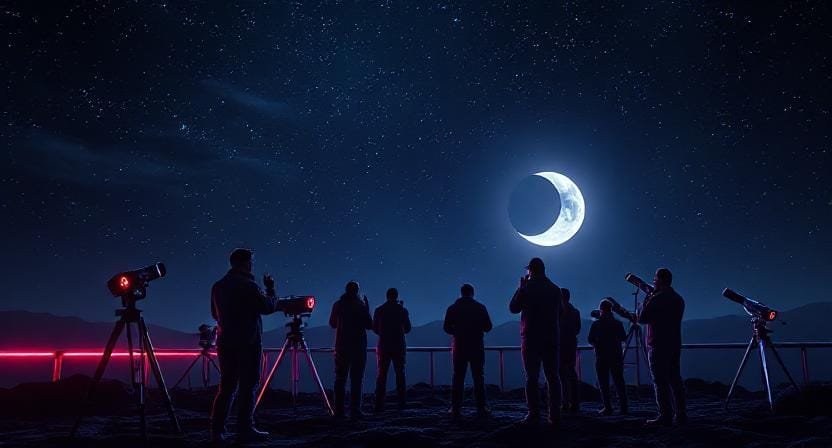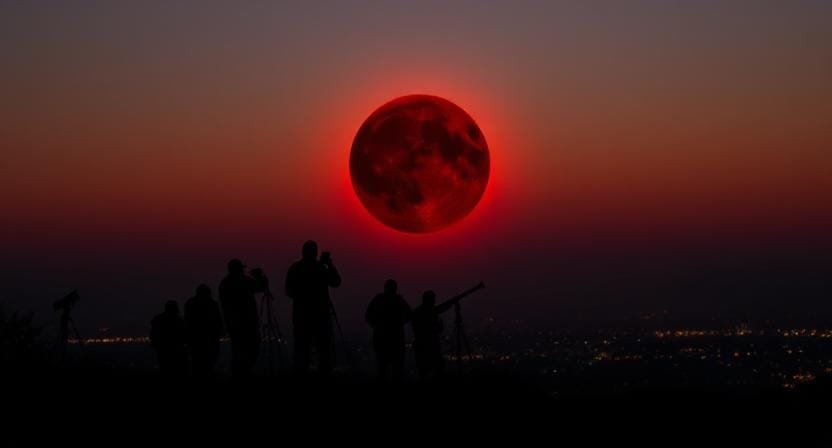Lunar Eclipse: A Captivating Phenomenon

lunar eclipse, sometimes called blood moon has ruled skies over the years, the night sky has always held a mysterious charm for humankind. Among many other phenomena, it is the most awesome astronomical event that comes to mind, a lunar eclipse. Blood moon during eclipse captures skywatchers’ imaginations all over the world and the moon turns a glowing red.These celestial events look breathtaking. Continue reading to find out more wonderful knowledge about this scientific phenomenon and the next occurrence of it.
What is a Lunar Eclipse?

When the Earth comes between the Sun and the Moon, a lunar eclipse takes place. Consequently, the Earth shadows the sunlight that would normally light up the Moon. The Moon does not go to dark, however; it takes on a deep and rather ghastly aspect-the so-called “blood moon.” Such a spectacular sight takes place during a full moon, and based on the alignment, it can become a total, partial, or even a penumbral eclipse.
Types of Lunar Eclipse

- Total Lunar Eclipse
The shadow of the Earth completely covers the Moon(umbra), thus creating an effect of a blood moon.The red color occurs due to Rayleigh scattering in which shorter wavelengths of light from the Sun are filtered out by the atmosphere of the Earth leaving red hues to reach the Moon.
- Partial Lunar Eclipse
Only a part of the Moon goes through the umbra of the Earth; therefore, some part of it darkens.
- Penumbral Lunar Eclipse
The Moon moves into the outer shadow(penumbra) of the Earth, therefore it is shading in a more subtle way which usually is hard to notice.
What makes the Moon look red when a lunar eclipse happens?
A total lunar eclipse, sometimes called blood moon, has a name that shows the last striking color-the striking color, which is red. Blood processing is due to Rayleigh scattering-blue for the sky and red for the sunsets. Sunlight that enters the atmosphere of the Earth becomes dispersed in such a way that the other types of light changes through some other types of light, where shorter types of light-such as blue and violet-from them scatter away. It is the longer types of light-red and orange-that bend toward the Moon, which is how we get that reddish glare that so distinguishes the surface of the Moon.
Lunar Eclipse Tonight: When and Where to Watch
There is nothing more exciting than a lunar eclipse that happens tonight. If the skies are clear and if you are in an area from where the lunar eclipse can be seen, the view can be experienced through bare eyes. When compared to solar eclipses, lunar eclipses can be viewed without any protective optics since they pose no risk whatsoever to the eyes.
How To Observe a Lunar Eclipse?

Here are few ways to observe lunar Eclipse
- Find a dark spot:
Light pollution in urban areas hampers visibility; head to places with minimal illumination.
- Timing:
Lunar eclipses happen within the parameters of certain hours, which vary from place to place; look for your local astronomical reports.
- Use any telescope or binoculars:
If they are not required, use them to improve the view and see more detail of the Moon’s surface.
- Make sure to take the photo:
A good photographer using a manually set camera can capture awesome photographs of the blood moon.
When is the Next Lunar Eclipse?
If you missed tonight’s lunar eclipse, don’t fret—there are always more stellar fests just around the corner. The next one will be on [insert date here based on the latest data], viewable from [regions where it can be seen], making a great scene for witnessing the blood moon live and direct for yourself. You can observe the upcoming eclipses in the NASA eclipse calendar or apps for astronomy that give precise timings according to your location.
The Cultural and Spiritual Significance of Lunar Eclipses
Throughout the annals of time, lunar eclipses have been seen as powerful omens and spiritual events. Various ancient cultures associated them with major cosmic transformations. For some cultures, they are connected to mystical energies and transformation. Be it scientific miracle or spiritual moment; no one can deny the sheer wonderment that a lunar eclipse invokes.

Conclusion
A lunar eclipse is actually more than an astronomical event: it is a reminder of the beauty and complexity of our universe. Whatever you get a chance to observe today-a lunar eclipse, or perhaps you can only wait until the next one-is an excellent opportunity to pause for a while and savor the rare and awe-inspiring wonder that takes place under our eyes. Be it the science behind the blood moon or cultural significance of eclipses, the Moon, our cosmic neighbor, always has more to deliver on.
